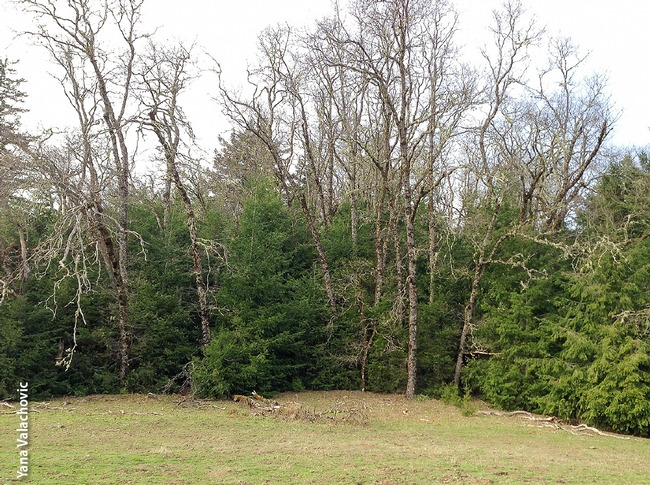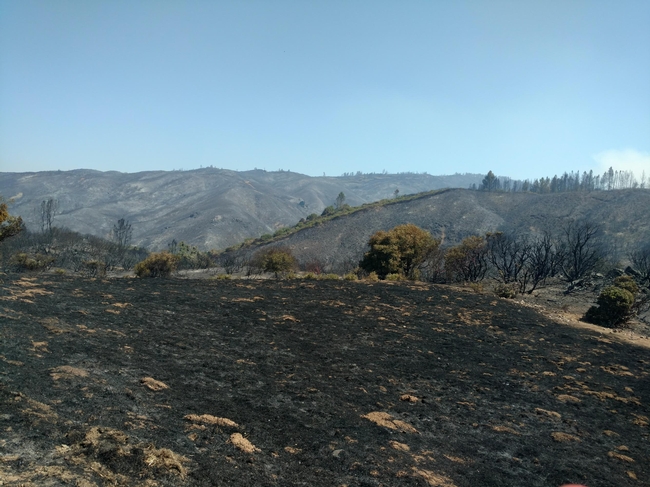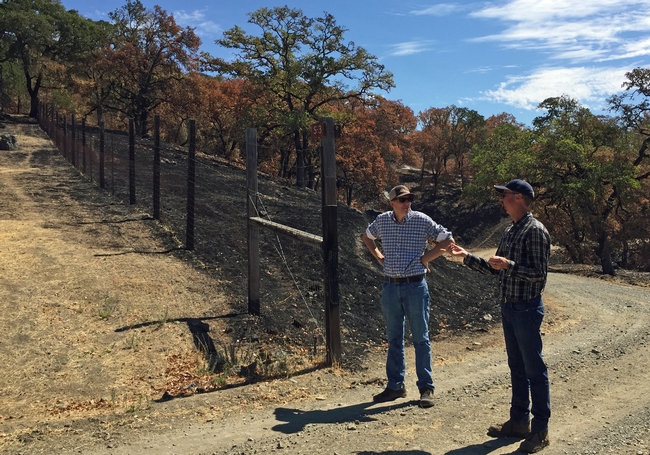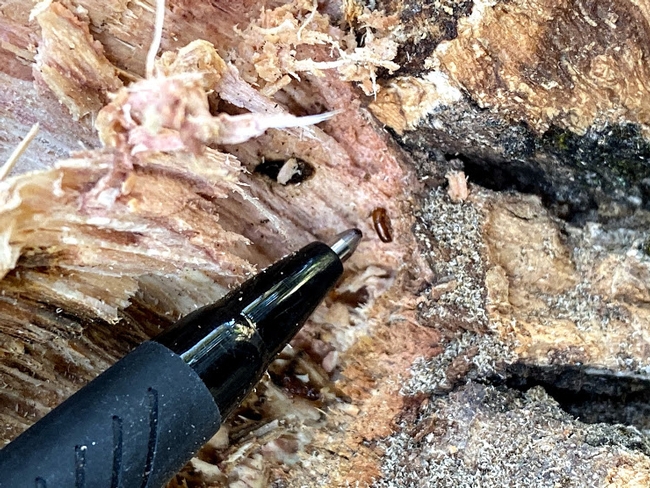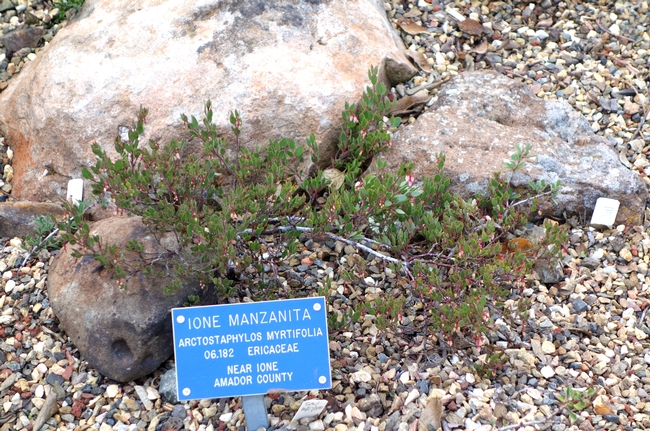Attention to oak woodland conservation does not wane amid COVID-19 crisis
California oak woodlands are highly prized ecoregions where stately trees, many of them hundreds of years old, are cornerstones of a habitat for wildlife and native plants. Sadly, some of these ecosystems are seriously threatened by exotic pests and diseases, encroachment by less desirable vegetation, and wildfire.
Each year, UC Cooperative Extension hosts workshops to share scientific developments aimed at conserving these important habitats – and the economic value of ranching – on oak woodlands, which are found on the lower elevation slopes of the Sierra Nevada, the Coast Range and other foothill areas of California.
Typically, the workshops are held in person and draw moderate-sized audiences for presentations, questions and answers, and field trips. Because of the COVID-19 pandemic, this year's workshop was offered online in April with pre-recorded presentations available for viewing at the participants' convenience and a live question-and-answer session on Zoom.
The retooled event garnered 500 registrants, over 300 views of the YouTube videos and 140 participants in the live Q&A session. The presentations and Q&A session are still available online for future viewing as well at http://cemendocino.ucanr.edu/Forestry/Workshops/California_Oak_Health.
“People from all walks of life participated, including those with professional and personal interest in oak woodlands,” said Yana Valachovic, UCCE forest advisor in Humboldt and Del Norte counties and a conference organizer.
Presentations at the 2020 conference included the following topics:
Encroachment by Douglas-fir
In Northern California, the biodiversity of oak woodlands is being threatened by Douglas-fir encroachment. The oaks' shade helps the young conifers get established with protection from harsh sun. In time, the fast-growing Douglas-fir trees pierce the oak canopies and begin to crowd out the areas' native understories, which are important for the diversity of birds, mammals and reptiles attracted to oaks.
As the Douglas-fir continue to grow and multiply, they threaten the very lives of the oak trees and the unique ecosystem they dominate.
To better understand the Douglas-fir encroachment, Valachovic established 10 research sites in Humboldt and Mendocino counties to gather information about the fate and the age of oaks. She and her research partners determined the ages of the oaks and firs, and counted the seedlings, saplings, snags and understory vegetation.
“With this research, we were able to demonstrate that even though the oak trees can be smaller in diameter, they are much older than the Douglas-fir trees,” Valachovic said. “The encroachment process is happening quickly, and the oaks are falling out of the system.”
The shift appears to have been initiated in the mid-19th and early-20th centuries, coinciding with the Gold Rush and wildfire suppression.
With the data confirming Douglas-fir encroachment, Valachovic turned her attention to oak woodland restoration. At 14 sites in Humboldt and Trinity counties, her team studied the effects of Douglas-fir removal.
“Grasses and forbs under the oaks reestablished. Diameter growth on the oaks increased,” she said.
These research findings contributed directly to changes in policy that had previously limited landowners' ability to remove and sell conifers encroaching on oak woodland. The research also helped create new funding opportunities to support oak woodland restoration and conservation in Northern California.
Case study of oak woodland wildfire recovery
In July 2018, about two-thirds of the 5,289-acre UC Hopland Research and Extension Center was burned by the River Fire.
The transformation of the land, which had likely been without a large wildland fire for at least 100 years, was intense and stressful, said UC Cooperative Extension forest advisor Michael Jones. However, it also provided a unique opportunity for researchers to compare the impact of wildfire on the resiliency of vegetation on grazed and ungrazed oak woodland.
Jones established 35 one-fifth acre research plots at the research center and collected data two months following the fire and one year later. The research will continue in the future to better understand long-term impacts, but Jones was able to share revealing early results at the workshop.
Right after the fire, in severely burned areas areas, the future of the oaks looked ominous. Jones predicted 40% tree mortality.
“The oaks were exposed to persistent, intense heat. They were cooked,” he said. “But two months after the fire, we were already seeing basal sprouts. This was an amazing response by the trees. Oaks are pretty damn tough.”
A year after the fire, surveys showed that tree mortality in the burned areas was 25%, much less than Jones' early predictions. While some management for specific situations in severely burned areas may be necessary – such as removal of hazard trees, reducing fuels in defensible spaces or removal to control invasive species – the results of this work show the trees recover naturally.
“Esthetically, I know these systems aren't as pleasing as they were before, but ecologically, they are healthy and recovering,” he said. “In 100 years, it will look just as good as before the fire.”
Fire impacts in woodland areas previously grazed and not grazed
The fire on the research station also permitted Jones to compare the fire's differing impact on non-grazed and grazed oak woodland. At first, the grazed areas looked almost unscathed with minimal flame scorching on the bark, while an area where the pasture hadn't been grazed for 25 years had evidence of much higher severity fire.
“Grazing is a phenomenal way to help manage fuels,” Jones said. However, the grazed areas displayed ecological shortcomings a year later.
“In grazed pastures, the large mature trees were still alive, but there was no oak regeneration (basal sprouting or seedlings),” Jones said. “In the ungrazed area, a lot of biomass had been killed, but there's nearly 100% resprout of oak trees and we have an impressive amount of oak seedling recruitment.”
Jones said he isn't discouraging grazing.
“But it is important to protect sites from grazing, and especially wildlife browse, when a landowner or land managers' objectives are to regenerate or conserve oak woodlands,” Jones said.
New ambrosia beetle another threat to California oaks
Akif Eskalen, UC Cooperative Extension specialist in the Department of Plant Pathology at UC Davis, has identified a new insect-fungus team that causes oak borer wilt in Northern California Valley and Blue Oaks. It is an ambrosia beetle, commonly known as Mediterranean Oak Borer, which carries several fungi in its mouth. The beetle bores into the tree and introduces fungi to grow for food. The fungi spreads and disturbs the transportation of water and nutrients, causing wilt in the tree.
The oozing and staining lesions on the bark are similar to other oak fungal diseases, such as sudden oak death. The beetle – native of Mediterranean basin countries in Africa, Asia and Europe – cannot fly far, so most likely is transported for long distances on infested firewood.
During the workshop, Eskalen suggested not moving firewood, removing heavily infested trees and chipping infested wood into 1-inch particles to reduce the spread of the ambrosia beetle and its fungal partner. He asked viewers to report any suspected oak tree infestations to the local agricultural commissioner, CDFA Diagnostic Laboratories, UC Cooperative Extension advisors or CALFIRE. Chemical options for sparing oaks from the ambrosia beetles' devastation are under investigation.
Threats to oaks and other native plants from root rotting Phytophthora
Restoration plantings have inadvertently introduced plant pathogens to native oak woodland ecosystems in California, said Ted Swiecki of Phytosphere Research, an organization that provides consulting services related to natural resource management, horticulture, urban forestry and agriculture. The group of pathogens causing the damage are largely from the Phytophthora genus, first described in the 1860s. The name translates from Greek to “plant destroyer.”
Swiecki has observed when Phytophthora infested plants and soils are introduced to native habitats, the pathogens can attack various native plants, including toyon, madrone, manzanita and full-grown oaks. Once established, the pathogen can spread along drainages, by moving soil from one area to another and by hitchhiking on equipment, tires and hiking boots.
The pathogen can easily be overlooked at nurseries, which, by their nature, have conditions that favor Phytophthora development. Plants at nurseries are well watered, have high root density and are often placed on the ground where they can pick up pathogens.
He said the best approach to tackling Phytophthora is not using nursery stock for restoration or beautification of natural oak woodland. Direct seeding, using natural regeneration, or onsite propagation are safer ways to enhance vegetation in oak woodland.
“It's easier to prevent Phytophthora from being introduced in the first place and much cheaper and more effective than trying to eradicate it later,” Siewcki said.


